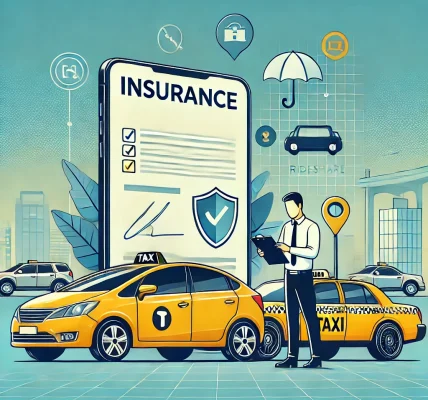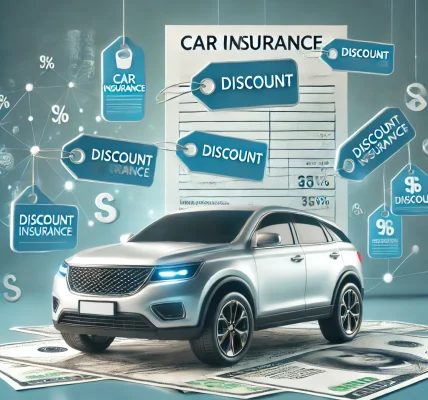Introduction
In recent years, car insurance policies have undergone a significant transformation, thanks to advancements in technology. One such advancement is the use of telematics in modern car insurance policies. While traditional insurance models often rely on general factors like age, driving history, and the car’s make and model, telematics-driven insurance allows insurers to personalize premiums based on a driver’s actual driving behavior.
In this blog, we will explore what telematics are, how they work, and the benefits they offer to both insurers and policyholders. We’ll also look at how this innovative approach is shaping the future of car insurance and how you can take advantage of it to save money on your premiums.
What is Telematics in Car Insurance?
Telematics refers to the use of technology to monitor and transmit data about a vehicle’s movement and driving behavior. In the context of car insurance, telematics is typically used to track the driving habits of policyholders and adjust their insurance premiums accordingly.
This technology involves the installation of a telemetry device (often referred to as a black box) in your car or the use of a mobile app that tracks specific driving behaviors, such as speed, braking, acceleration, and the times and locations at which you drive. The data collected is then transmitted to the insurance company, where it is analyzed to assess the risk of insuring you and calculate your premium.
Key Features of Telematics Insurance
- Usage-Based Insurance (UBI): Telematics is a cornerstone of pay-per-mile insurance, where your premium is directly related to how much you drive.
- Behavior-Based Pricing: With telematics, your driving behavior—such as how hard you brake, how fast you accelerate, and how safely you drive—determines your premium.
- Real-Time Data: Telematics offers insurers real-time insights into your driving habits, allowing for more accurate pricing.
How Does Telematics Work in Car Insurance?
Telematics works by collecting a variety of data points from your vehicle. The most common type of telematics-based insurance is pay-as-you-drive (PAYD) or pay-how-you-drive (PHYD). Here’s how it works:
1. Data Collection
Once you enroll in a telematics insurance program, you either install a device in your car (a small device often plugged into the OBD-II port) or download a mobile app. These devices and apps track various metrics, including:
- Speed: How fast you drive in different conditions.
- Acceleration and Braking: How aggressively you speed up or slow down.
- Distance Driven: How many miles you drive.
- Time of Day: When you drive (e.g., nighttime driving may be riskier).
- Location: Certain areas may be more prone to accidents or theft.
2. Data Transmission
The device or app transmits the collected data to your insurance company, either through your car’s onboard system or via your smartphone’s internet connection. Some systems transmit data in real-time, while others send it periodically.
3. Analysis and Pricing
Once the data is collected, the insurance company analyzes it to understand your driving habits and calculate your insurance premium. This process often involves comparing your driving behavior to established risk models, which help determine how much risk you pose to the insurer.
4. Premium Adjustment
Based on the analysis of your driving habits, your premium may be adjusted accordingly. Safe drivers who exhibit smooth acceleration, safe braking, and low-mileage driving typically receive lower premiums, while drivers who exhibit risky behaviors (such as speeding, hard braking, or frequent driving during high-risk hours) may face higher premiums.
Benefits of Telematics in Car Insurance
Telematics-based insurance offers a number of benefits for both insurance companies and policyholders. Here’s why it’s gaining traction in the industry:
1. Personalized Premiums
One of the most significant benefits of telematics is that it allows for personalized premiums. Instead of being charged based on general factors like your age, gender, or car model, your premium is based on your actual driving behavior. This results in more accurate pricing that reflects how risky or safe you are as a driver.
Benefit for Safe Drivers
If you’re a cautious driver, telematics can reward you with lower premiums, reflecting your safe driving habits. Conversely, if you drive aggressively or frequently engage in risky behaviors, you’ll face higher premiums, which acts as an incentive for safer driving.
2. Potential Savings
Telematics can result in substantial savings for drivers who are considered low-risk. Insurance providers often offer significant discounts to safe drivers, and many telematics-based policies offer initial discounts for signing up or completing safe driving milestones.
Savings Example
For example, if you’re a young driver (who typically faces higher premiums), using telematics can demonstrate that you drive safely and responsibly, potentially resulting in discounts that could lower your premium by 10% to 30%.
3. Encouragement for Safer Driving
Telematics can be a powerful tool for encouraging safer driving. With real-time data, drivers are more aware of their driving habits, and this awareness often leads to safer practices on the road.
- Positive Feedback: Some telematics programs provide instant feedback on your driving, helping you adjust your behavior immediately. For example, if the app detects harsh braking, it might prompt you with tips on how to drive more smoothly.
- Behavior Modification: Over time, the awareness of being monitored can help improve overall driving behavior, leading to fewer accidents and claims, which benefits both the driver and the insurer.
4. Convenient Monitoring and Claims Processing
In addition to its role in pricing, telematics can also streamline claims processing. Since insurers already have access to detailed driving data, they can quickly assess the circumstances of an accident, which can lead to a faster and more efficient claims process.
- Crash Detection: Some telematics devices are equipped with crash detection features that immediately notify the insurer of an accident. This can speed up the response time and improve the claims experience.
Drawbacks and Considerations of Telematics-Based Insurance
While telematics offers many advantages, there are also some drawbacks and considerations to keep in mind before opting for this type of policy.
1. Privacy Concerns
One of the biggest concerns for drivers is privacy. Telematics requires the collection and sharing of a lot of personal driving data, which can feel intrusive for some people. For example, insurers may have access to information about where and when you drive, which some individuals may find uncomfortable.
2. Limited Availability
Telematics-based insurance isn’t available everywhere. While it’s gaining popularity, not all insurers offer this option, and availability may be limited based on your location or the type of vehicle you drive.
3. Risk of Increased Premiums for High-Risk Drivers
For drivers who exhibit risky driving behavior, such as frequent speeding or aggressive braking, telematics can result in higher premiums. If you’re not a safe driver, using telematics could backfire, as the insurer may raise your rates based on the data collected.
How to Get Started with Telematics Insurance
If you’re interested in telematics-based car insurance, here’s how to get started:
- Research Providers: Look for insurance companies that offer telematics-based policies. Check for any special discounts or offers for first-time users.
- Install the Device or App: Once you’ve signed up, you’ll either need to install a telematics device in your vehicle or download an app that tracks your driving.
- Drive Safely: To maximize your savings, focus on safe driving habits like avoiding hard braking, accelerating smoothly, and reducing driving at high-risk times.
- Track Your Data: Many apps or devices provide real-time feedback on your driving habits, so use this information to improve your driving and earn more discounts.
Conclusion
Telematics is revolutionizing the world of car insurance by enabling insurers to offer more personalized and data-driven pricing. By tracking your driving habits in real time, telematics allows you to pay for what you use and how safely you drive, potentially saving you money on premiums while encouraging better driving behavior.
If you’re a safe driver, telematics could be a great option for lowering your car insurance costs, while also benefiting from faster claims processing and additional driving insights. However, it’s important to be aware of the privacy concerns and consider whether the potential savings outweigh any discomfort with sharing your driving data.
As car insurance evolves with new technology, telematics-based policies will continue to offer more opportunities for drivers to take control of their premiums, reward safe driving, and improve overall road safety.



